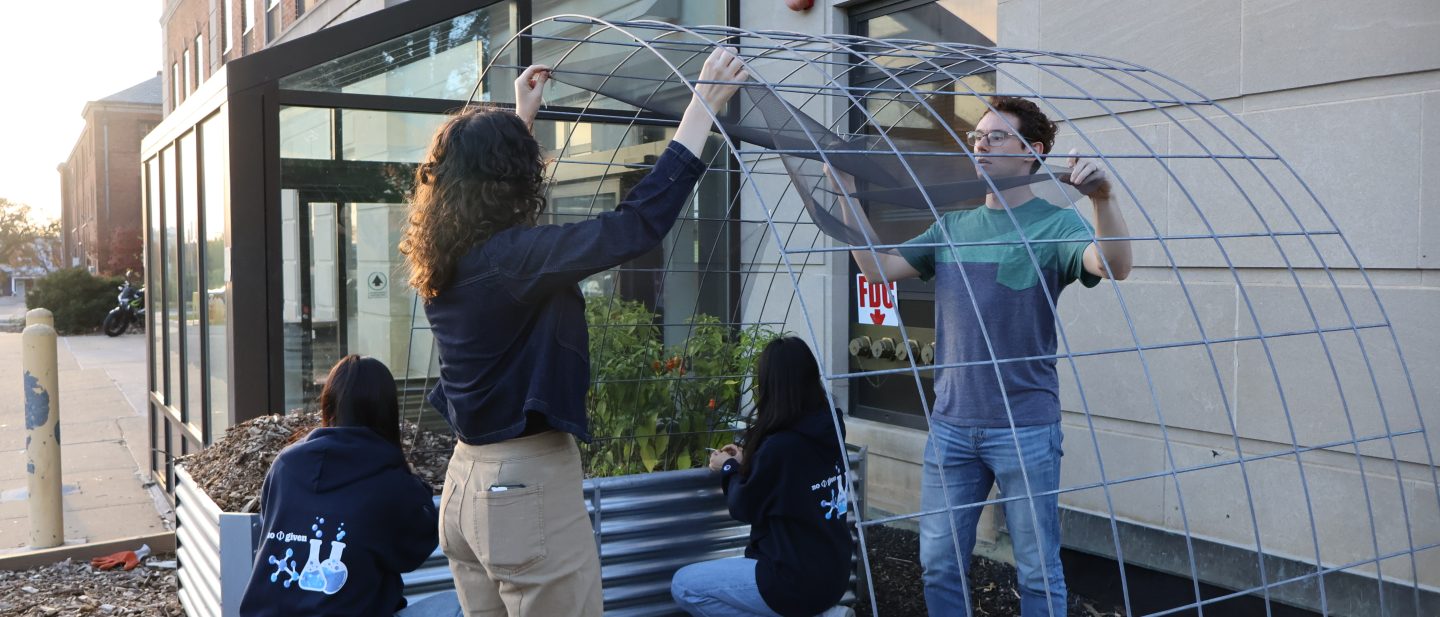
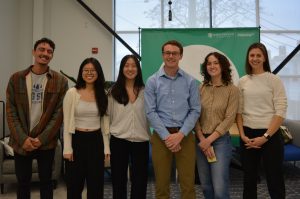 The Campus as a Living Lab program leverages the campus to test sustainable innovations. One example currently underway is a team of students in an engineering course who are designing and prototyping a rainwater collection and storage system to irrigate a garden at the Wyman building on the Homewood campus.
The Campus as a Living Lab program leverages the campus to test sustainable innovations. One example currently underway is a team of students in an engineering course who are designing and prototyping a rainwater collection and storage system to irrigate a garden at the Wyman building on the Homewood campus.
Awarded funding by the Campus as a Living Lab program, course instructor Alissa Burkholder Murphy aims to address this issue through an undergraduate multidisciplinary design course. Burkholder Murphy is the director of the Multidisciplinary Design Program at Johns Hopkins, which brings together a diverse range of engineering undergraduates into design teams that work with external project partners on real-world problems. The multidisciplinary teams are assembled to create a unique range of skills required to tackle a challenge posed by the project partners.
Under Professor Burkholder Murphy’s instruction, the rainwater collection team aims to design a modular rainwater collection, storage, and distribution system which will be tested on JHU’s Homewood Campus and then replicated at Baltimore K-12 school gardens, to teach students about water conservation innovations. We spoke to Burkholder Murphy and the student team to learn about their design process and interest in environmentally conscious practices.
Why capture and store rainwater?
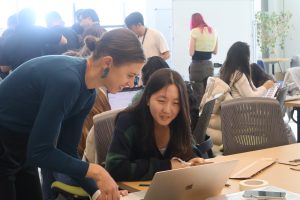 Over the years, Burkholder Murphy has noticed a growing student interest across engineering disciplines in projects that impact their community and help the environment. The Campus as a Living Lab program provided an opportunity to run a project that felt more relevant and closer to home for undergraduates hoping to create impact in the space around them.
Over the years, Burkholder Murphy has noticed a growing student interest across engineering disciplines in projects that impact their community and help the environment. The Campus as a Living Lab program provided an opportunity to run a project that felt more relevant and closer to home for undergraduates hoping to create impact in the space around them.
“The challenge of harvesting rainwater for irrigation came up through conversations with the sustainability office through the grounds team.” The prototype on campus gardens will serve to conserve freshwater while demonstrating and increasing awareness of water conservation solutions. Capturing and storing rainwater also improves the watershed by reducing runoff that can cause erosion and flash flooding during storm events.
Successful prototyping on the JHU campus will advance the team’s goal of eventually introducing their solution to Baltimore City Public Schools for water conservation and sustainability education. “People are creative in solving problems when they feel empowered to do so”, said Burkholder Murphy, while also expressing hope that seeing the team’s innovation in action will inspire implementation and interest from the public.
Prototyping Innovative Sustainability Solutions 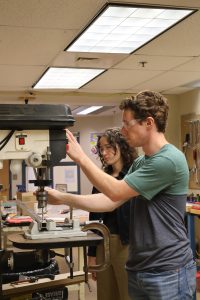
Claire Borden, a senior Mechanical Engineering major on the team, described the team’s three main ideas:
- One is an inverted canopy designed to funnel water into a collection point, and tests are underway for its collection properties and ability to withstand weather conditions.
- A second idea utilizes a dew net, which captures dew overnight, as a potential collection method.
- Their third idea, which also needs to undergo weather testing, involves an inclined slide that collects water and diverts it to a central point.
The project will serve as a demonstration and learning opportunity for passersby and can be scaled up more broadly.
How does this course align with your future career goals?
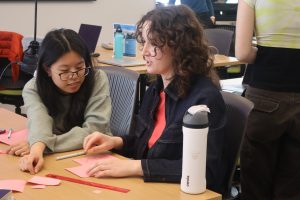 Claire believes it is important to look for projects and jobs that incorporate sustainable practices into their work. She also aims to continue working in environments with high exposure to talent from different fields, as she enjoys the mutual learning involved in a multidisciplinary team. “This really helps us learn how to listen to each other and communicate our ideas more clearly and concisely.”
Claire believes it is important to look for projects and jobs that incorporate sustainable practices into their work. She also aims to continue working in environments with high exposure to talent from different fields, as she enjoys the mutual learning involved in a multidisciplinary team. “This really helps us learn how to listen to each other and communicate our ideas more clearly and concisely.”
Gabriel Raiber is another senior in Mechanical Engineering major on the team with Claire and two Chemical and Biomolecular Engineering majors, Sabrina Chen and Jessie Huh. “Both majors have the same goal of pursuing sustainability, so we have to learn how to use each other’s language and how we talk to each other. That’s very applicable in future jobs.”
Gabriel is particularly passionate about the potential social impacts of their prototype. “A big portion of this project that we’ve learned is that it’s not necessarily about the solution, but the teaching space around the solution.” The team is trying to “figure out ways to teach the community about sustainability practices,” by incorporating multipurpose aspects into their solution, such as using their collection system as a teaching space or shade for kids.